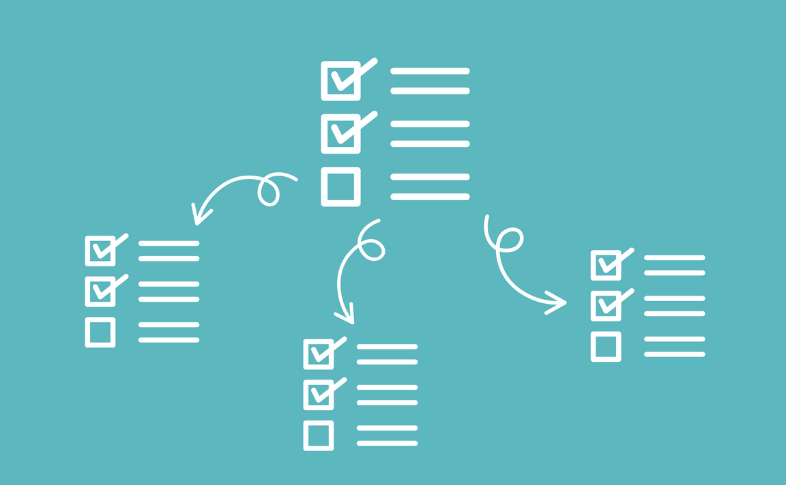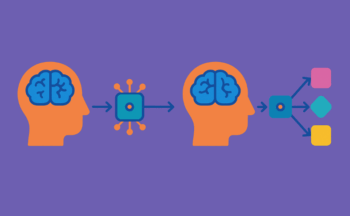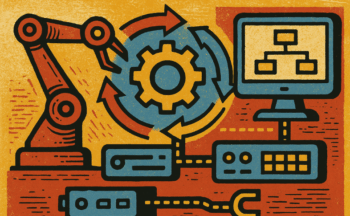As organizations grow, so do their processes. What starts as a straightforward workflow can quickly turn into a sprawling sequence of tasks, hand-offs, and responsibilities. The result? Confusion, inefficiency, and missed opportunities.
At Way We Do, our mission is to help businesses miss nothing again. That’s why we’ve launched Sub-Processes — a new feature that makes it easier to manage, organize, and automate complex workflows.

What Exactly Is a Sub-Process?
A sub-process is a process within a process. It’s a self-contained series of tasks that are grouped together and embedded into a larger, more comprehensive workflow.
Instead of trying to run everything as one giant checklist, you can break it down into smaller, more manageable parts. Each sub-process has a clear start and end, defined ownership, and the flexibility to run independently, while still contributing to the bigger picture.
For example:
- Main Process: New Employee Onboarding
- Sub-Process 1: IT Setup
- Sub-Process 2: HR Paperwork
- Sub-Process 3: Welcome Kit Assembly
This modular approach keeps things structured, focused, and easier to manage.

Why Sub-Processes Matter
1. Simplify Complex Workflows
Large workflows often feel overwhelming, especially when dozens of tasks and people are involved. Sub-processes let you zoom out for a high-level view — or zoom in for the details.
This simplification makes processes easier to visualize, analyze, and improve. Instead of staring at a cluttered diagram, you see a logical flow that makes sense to everyone involved.
Example:
A company onboarding hundreds of seasonal staff can break its onboarding workflow into sub-processes for documentation, training, and compliance checks.
Each team handles its part, while leadership maintains visibility across the whole process.
2. Improve Readability and Maintenance
One of the biggest challenges in business process modeling is keeping workflows understandable. Sub-processes clean up your diagrams by hiding details until you need them.
When it’s time to make updates, you don’t have to untangle an entire workflow. Instead, you update a single sub-process. This saves time, reduces errors, and makes your processes more adaptable.
3. Reuse Common Tasks Across the Organization
Every business has tasks that show up again and again. By turning them into sub-processes, you only have to define them once — and then reuse them anywhere.
Example:
- A credit check sub-process could appear in:
- Loan Application workflows
- New Customer Account workflows
- A safety inspection sub-process could be reused in multiple compliance processes across different teams.
This reusability promotes consistency, standardization, and efficiency.
4. Strengthen Security and Privacy
Sub-processes also support stronger access control. Not every employee needs access to every step of a workflow. By isolating tasks into sub-processes, you can give people access only to the information relevant to their role.
This follows the principle of least privilege — a key best practice for data security and privacy. It ensures sensitive data is seen only by those who need it, while still allowing collaboration across teams.
Sub-Processes + AI: A Smarter Partnership
Sub-Processes aren’t just about structure — they’re also about automation. Combined with AI and deterministic automation, they unlock new ways to streamline work.
- AI (the manager): Handles variability, interprets unstructured data, makes decisions.
- Deterministic Sub-Processes (the workers): Execute predictable, rule-based tasks quickly and accurately.
Example: Invoice Processing
- AI reads an email with an invoice attached, extracts key details.
- A sub-process enters those details into accounting software.
- If the invoice format is unusual, AI flags it for human review.
This model is more resilient than traditional automation because AI can handle exceptions without breaking the whole system.
How to Use Sub-Processes in Way We Do
Way We Do makes it simple to add and manage sub-processes:
- Create an Activity Step in your main process checklist.
- Open the information panel and select Show existing content.
- Choose Click to select a sub-process, procedure, or quiz.
- Select the relevant checklist and configure settings.
Flexible settings include:
- Allow multiple runs: Run the sub-process as many times as needed.
- Minimum to complete: Define how many times the sub-process must be completed before the main step is considered done.
- Auto-check step on completion: Automatically mark the main step complete once the sub-process is finished.
- Dependencies: A sub-process won’t launch until required steps are complete.
- Role assignment: Only collaborators with assigned roles can trigger the sub-process.
- Due dates: Add deadlines to keep sub-processes aligned with the overall timeline.
Managing Sub-Processes in Action:
- If a sub-process is completed, it records to the main workflow automatically.
- If abandoned, the main workflow continues running — but the record is still visible for audit purposes.
- If the main process is abandoned, all active sub-processes close as well.
Real-World Applications of Sub-Processes
Here are just a few ways businesses can use Sub-Processes to improve operations:
- Human Resources: Split recruitment workflows into sub-processes for job posting, candidate screening, and interview scheduling.
- Finance: Build reusable sub-processes for credit checks, invoice approvals, or reimbursements.
- Compliance: Run audit preparation sub-processes independently while keeping them linked to the larger compliance framework.
- Customer Onboarding: Assign different teams sub-processes for account setup, product training, and compliance checks.
Why Sub-Processes Are a Game-Changer
Sub-Processes turn large, tangled workflows into modular, scalable systems. They bring:
- Clarity by simplifying complexity
- Efficiency by reducing duplication of work
- Consistency by reusing standard tasks
- Security by controlling access at a granular level
- Resilience when paired with AI and deterministic automation
For growing organizations, this is more than just a convenience — it’s a competitive advantage.
Ready to Try Sub-Processes?
Whether you’re managing employee onboarding, compliance audits, or customer workflows, Sub-Processes help you break things down, stay organized, and build scalable systems that adapt as your business grows.
Log in to your Way We Do account today and start exploring Sub-Processes.
With this new feature, you’ll see that big processes don’t have to mean big headaches. Instead, they can be modular, manageable, and intelligent — just the way business should be.





